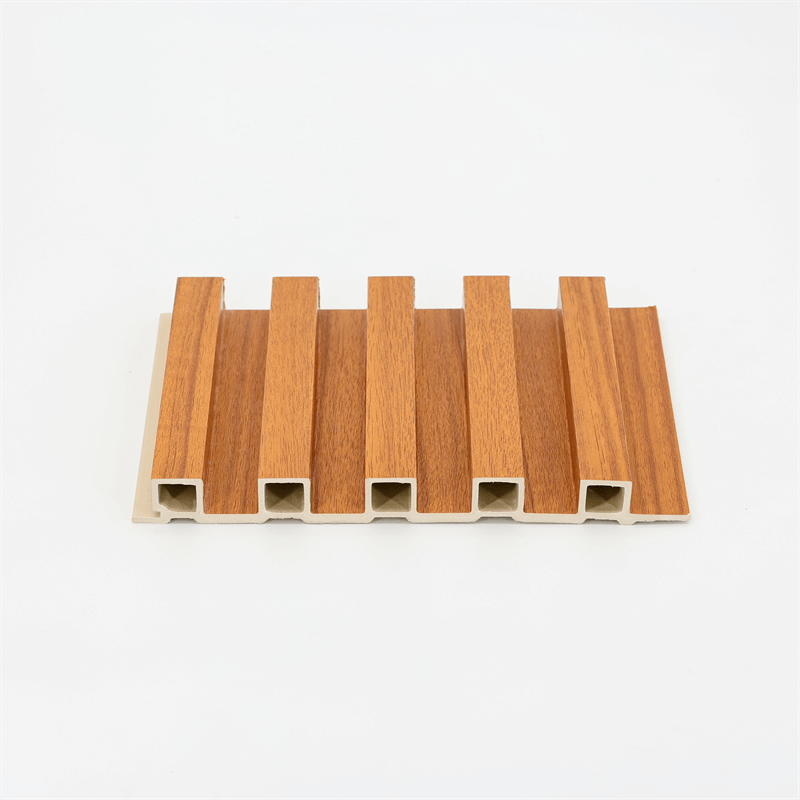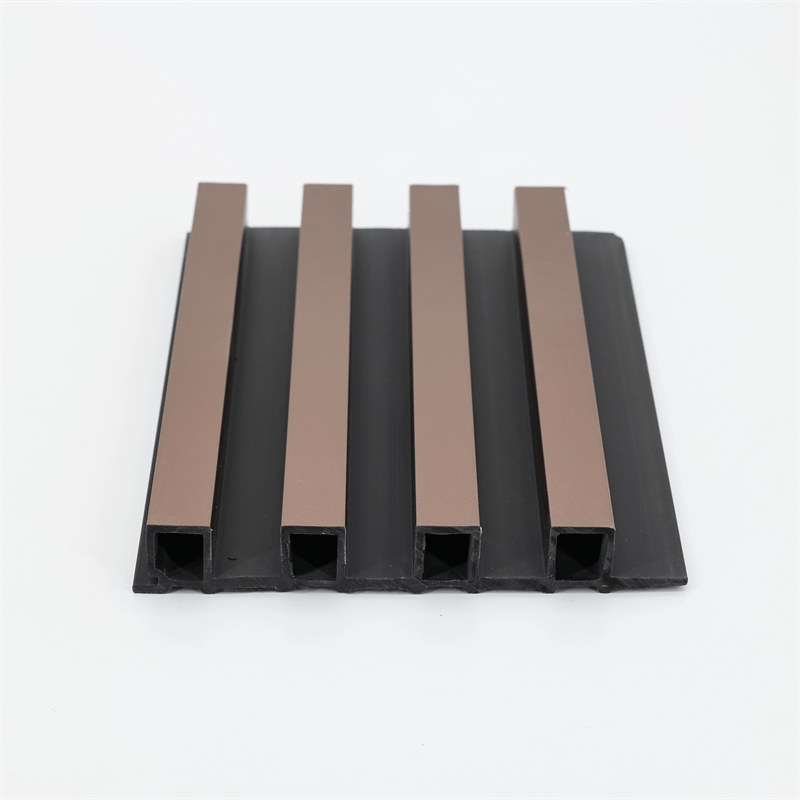In the ever-evolving world of architecture and interior design, innovative materials continue to shape the future of construction practices.
WPC (Wood-Plastic Composite) wall panels have emerged as a game-changing solution in the realm of wall cladding.
In this essay, we will explore why WPC wall panels are considered the future of wall cladding.
We will delve into four key areas: sustainability and eco-friendliness, advanced technological features, design versatility, and long-term cost-effectiveness.
I. Sustainability and Eco-Friendliness of WPC Wall Panels
Sustainability is a crucial factor in modern construction, and WPC wall panels excel in this aspect. Let’s explore the sustainability and eco-friendliness of WPC panels:
- Use of Recycled Materials: WPC panels incorporate recycled materials, such as reclaimed wood fibers and recycled thermoplastics. By utilizing these recycled components, WPC panels help reduce waste, promote circular economy practices, and lessen the demand for virgin resources.
- Reduced Environmental Impact: The manufacturing process of WPC panels generates fewer greenhouse gas emissions and requires less energy compared to traditional wall cladding materials. This reduction in environmental impact contributes to mitigating climate change and supports sustainable construction practices.
- Extended Lifespan: WPC wall panels offer exceptional durability and longevity. Their resistance to moisture, termites, and other environmental factors extends their lifespan, reducing the need for frequent replacements. This longevity further enhances the sustainability of WPC panels by minimizing resource consumption over time.
II. Advanced Technological Features
WPC wall panels embrace advanced technological features that propel them into the future of wall cladding. Let’s explore some of these features:
- Waterproof and Moisture-Resistant: WPC panels are inherently waterproof and highly resistant to moisture. This attribute makes them suitable for wet areas such as bathrooms or kitchens, where traditional materials might deteriorate over time. The waterproof nature of WPC panels ensures their long-term performance and aesthetic appeal.
- Fire Resistance: Many WPC wall panels are manufactured to be fire-resistant, providing an added layer of safety. These panels comply with fire codes and regulations, contributing to the overall fire protection of buildings. Fire-resistant WPC panels are a crucial consideration for architects and designers who prioritize occupant safety.
- Thermal Insulation: WPC panels possess excellent thermal insulation properties, enhancing energy efficiency in buildings. The panels act as a barrier, reducing heat transfer between the interior and exterior of the structure. This thermal insulation capability helps regulate indoor temperatures, reducing the reliance on artificial heating or cooling systems.
III. Design Versatility
WPC wall panels offer unparalleled design versatility, allowing architects and designers to unleash their creativity. Let’s explore the design possibilities with WPC panels:
- Aesthetics: WPC panels come in a wide range of colors, finishes, and textures, offering abundant options to suit various design preferences. Whether mimicking natural wood or showcasing modern patterns, WPC panels provide a visually appealing and customizable aesthetic for any project.
- Integration of Fixtures: WPC panels can be designed with pre-cut openings and integrated fixtures, such as lighting or electrical outlets. This integration streamlines the installation process, ensuring a seamless and cohesive appearance. The ability to incorporate fixtures within the panels adds to their design versatility and functionality.
- Compatibility with Various Architectural Styles: WPC panels blend effortlessly with different architectural styles, from contemporary to traditional. Their adaptability allows them to be used in diverse applications, including residential, commercial, and public spaces. WPC panels enable architects and designers to achieve their desired design vision while maintaining structural integrity.
IV. Long-Term Cost-Effectiveness
WPC wall panels offer long-term cost-effectiveness, making them a viable choice for sustainable construction projects. Let’s explore the key factors contributing to their cost-effectiveness:
- Reduced Maintenance Costs: WPC panels have low maintenance requirements, eliminating the need for frequent painting, sealing, or intensive cleaning. The panels are resistant to rot, mold, and pests, reducing the expenses associated with maintenance and upkeep over time.
- Durability and Longevity: WPC panels are known for their durability and extended lifespan. They can withstand harsh weather conditions, UV radiation, and physical impacts without deteriorating. This durability translates into cost savings, as there is no need for frequent replacements or repairs.
- Energy Efficiency: WPC panels with thermal insulation properties contribute to energy efficiency in buildings. By reducing heat transfer, these panels help regulate indoor temperatures, potentially lowering energy consumption for heating and cooling. The long-term energy savings contribute to the overall cost-effectiveness of WPC wall panels.
WPC wall panels are poised to shape the future of wall cladding in the construction industry.
Their sustainable attributes, advanced technological features, design versatility, and long-term cost-effectiveness position them as the go-to solution for architects, designers, and builders.
By embracing WPC wall panels, construction professionals can create aesthetically pleasing, eco-friendly, and durable structures that stand the test of time.
As the demand for sustainable and innovative materials continues to grow, WPC wall panels remain at the forefront, representing the future of wall cladding.

In conclusion, WPC wall panels have emerged as a groundbreaking solution that embodies the future of wall cladding.
With their sustainable characteristics, advanced technological features, design versatility, and long-term cost-effectiveness, they offer numerous advantages over traditional materials.
By incorporating recycled components, reducing environmental impact, and promoting circular economy practices, WPC panels contribute to sustainable construction practices and align with the increasing demand for eco-friendly solutions.
Furthermore, the advanced technological features of WPC panels, including their waterproof and moisture-resistant properties, fire resistance, and thermal insulation capabilities, position them as innovative materials that prioritize safety, energy efficiency, and occupant comfort.
Architects and designers can leverage the design versatility of WPC panels to bring their creative visions to life, offering aesthetically appealing solutions that seamlessly integrate with various architectural styles.
Moreover, the long-term cost-effectiveness of WPC wall panels, resulting from their reduced maintenance costs, durability, and energy efficiency, make them an economically sound choice for construction projects.
By choosing WPC panels, builders and property owners can minimize expenses associated with upkeep, repairs, and energy consumption over the lifespan of the building.
As the construction industry evolves, WPC wall panels are paving the way for a sustainable, technologically advanced, and aesthetically pleasing future.
Their transformative qualities not only meet the demands of the present but also anticipate the needs of tomorrow.
By embracing WPC wall panels, architects, designers, and builders can create structures that embody both innovation and environmental responsibility, shaping a better and more sustainable world for generations to come.


